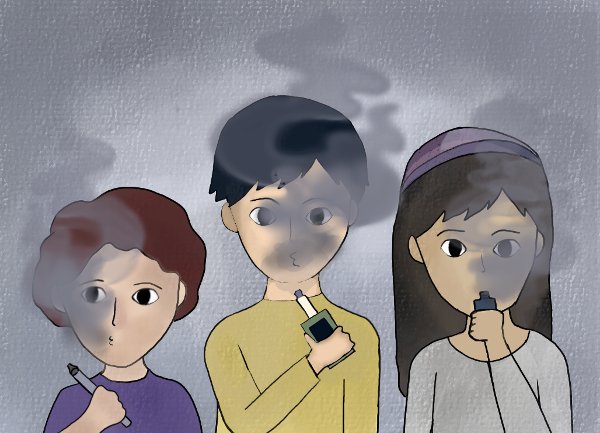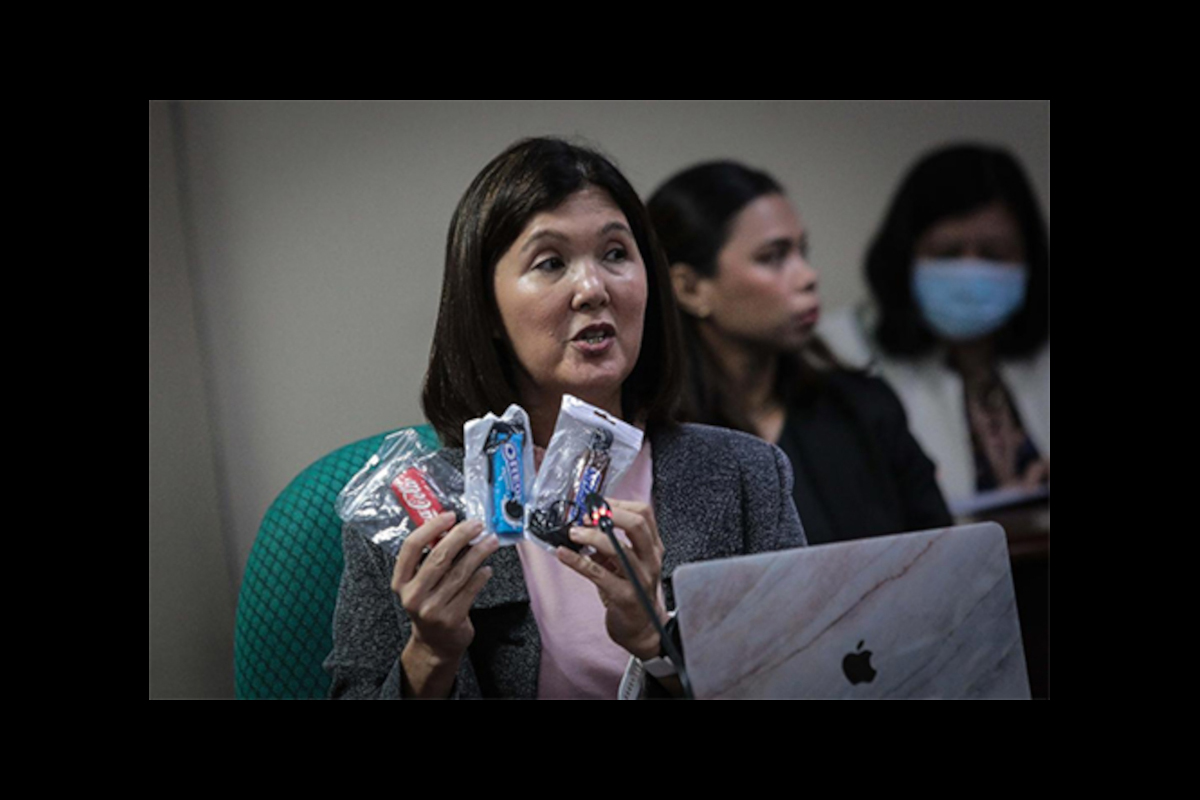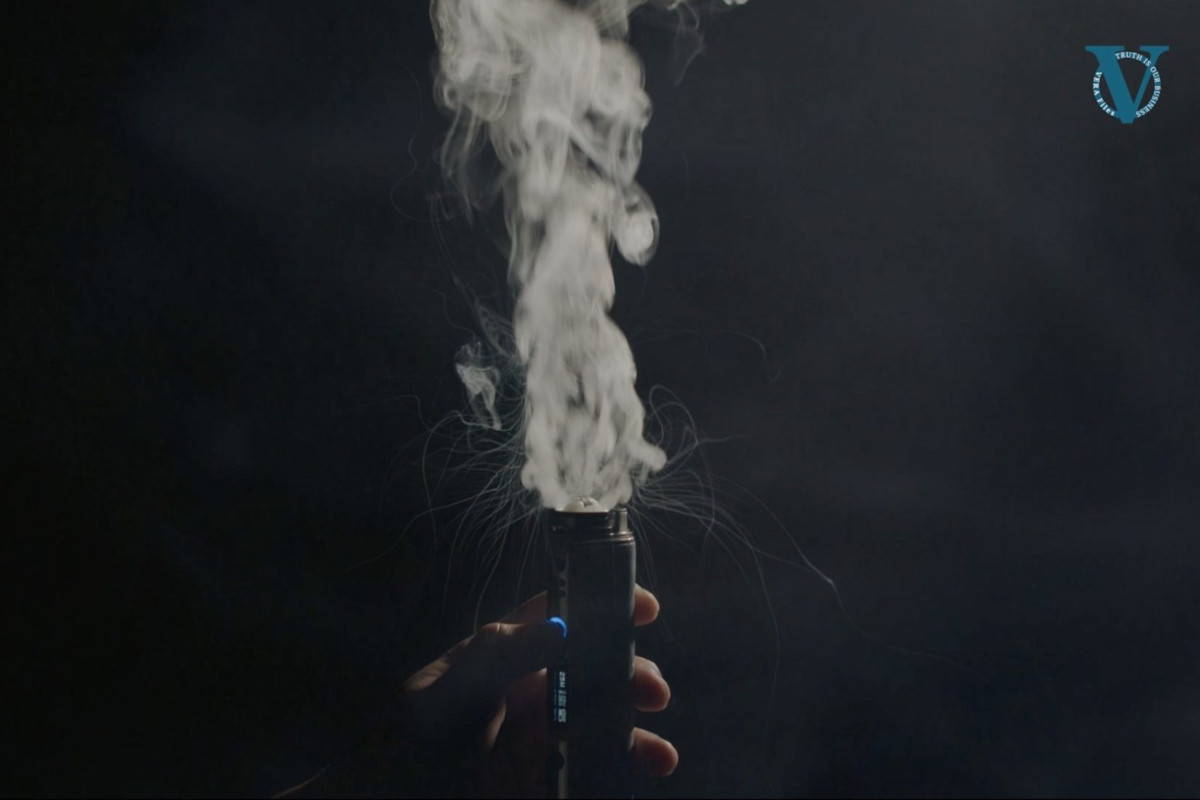Lowering the minimum age of persons who can buy, sell, or use vapes and electronic cigarettes to 18 years old means giving younger people access to products with adverse health effects and which could lead to substance abuse, medical and health experts say.
(See Vape use could lead to alcohol and illegal drug use ー health experts)
“Ang ating tinututulan ay ‘yung palalaganapin ang paggamit nito [e-cigarettes] sa lahat ng tao, kahit ‘yung hindi naninigarilyo, kahit ‘yung kabataan dahil napakaraming side effects, dangers. Daan ito para maging adik sa ibang mga substance like tobacco,” said Antonio Dans, president of the Asia Pacific Center for Evidence-Based Health Care, during an Aug. 31 forum organized by the Philippine College of Physicians (PCP).
(What we oppose is making these [e-cigarettes] accessible to all people, even those who are not smoking, even young people, because these have several side effects, dangers. This opens a way for addiction to other substances like tobacco.)
Senate Bill (SB) No. 2239, or the Vaporized Nicotine Products Regulation Act filed by Sen. Ralph Recto on May 26, is in the period of interpellation prior to second reading approval, while its counterpart, House Bill No. 9007, already secured third reading approval earlier in May.
SB 2239 gives retailers the “responsibility to verify the age of buyers,” who “may be required” to present any valid identification card indicating age or date of birth.
The pending bills seek to modify Executive Order No. 106, signed by President Rodrigo Duterte in February 2020, which prohibits the sale and distribution of electronic nicotine/non-nicotine delivery systems (ENDS/ENNDS) and heated tobacco products (HTPs) to persons below 21 years old.
What does lowering the age restrictions for these novel cigarette products really mean? Here are three things you need to know:
1. At what age do smokers start?
“Smoking is a pediatric disease. Many of our smokers commence their smoking before the age of 18,” said Rizalina Gonzalez, a pediatrician and member of the Philippine Pediatric Society (PPS), during an online forum on COVID-19 and Tobacco organized by Imagine Law, a public interest group that advocates evidence-based policy for Filipinos’ health and well-being.
One in eight Filipino teens aged 13 to 15 has “used any tobacco products,” based on data from the 2019 Global Youth Tobacco Survey (GYTS), a nationally representative, school-based survey conducted every three to four years by the Epidemiology Bureau of the Department of Health (DOH), with support from the World Health Organization (WHO) and the United States Centers for Disease Control and Prevention (U.S. CDC).
The survey questionnaire covers topics on tobacco use, cessation, secondhand smoke, access to and availability of tobacco products, and knowledge and attitudes regarding tobacco use.
/amp-iframe>
The same survey showed that 14.1%, or 940 of the 6,670 student-participants, said they have “tried or experimented with electronic cigarettes.”
Four years earlier, when the DOH started to include a question on e-cigarettes, the GYTS showed that more than 40% of the students were already aware about the product.
According to a 2018 position paper of the PPS Tobacco Control Advocacy Group (TCAG), younger people tried e-cigarettes mostly “out of curiosity.” Others considered factors such as “good flavors,” influence of peers, and the perception that those are “healthier” than traditional cigarettes.
Tedros Adhanom Ghebreyesus, director-general of the WHO, said in a July 27 article about the fight against the tobacco epidemic that the agency is “concerned that children who use these products [e-cigarettes] are up to three times more likely to use tobacco products in the future.”
2. What do we know so far about the health effects of e-cigarette smoking on young people?
Tobacco smoke has over 7,000 chemicals — more than 90 of these, such as ammonia and carbon monoxide, have harmful and potentially harmful health effects, according to the U.S. Food and Drug Administration (FDA). Around 70 are linked to cancer, including arsenic, benzene, and lead, based on a recent assessment of the International Agency for Research on Cancer.
Of these, experts are concerned particularly about children’s exposure to nicotine, a chemical compound found in tobacco plants linked to its addictive properties.
Health experts in the Aug. 31 forum said the “adolescent brain is vulnerable to the rewarding effects of nicotine,” especially aspects of their cognitive, emotional, social, sensory, and motor development, which could pave the way for the use of other drugs and substances.
Gonzalez explained that nicotine can affect executive functions of the brain such as learning, impulse control, and risk-taking behaviors. She added that when a child learns to smoke, quitting becomes even harder “because of their brain immaturity.”
A 2017 systematic review of studies on the adverse health outcomes of smoking in children, published in the Current Opinion in Pediatrics, said smoking during adolescence raises the risk for developing psychiatric disorders and impairment in cognitive function in later life.
In a 2019 explainer on alternative novel products, published by the U.S.-based tobacco company Philip Morris International, HTPs and most e-cigarettes still contain nicotine, but some e-liquids are nicotine-free.
Nicotine “is naturally present” in HTPs, which are made from tobacco leaves, while nicotine in e-cigarettes are “added to the e-liquid,” it said.
(See VERA FILES FACT SHEET: Smoke-free alternatives to cigarettes explained)
Apart from nicotine, health experts are also concerned about the health effects of flavoring agents used in ENDS/ENNDS when inhaled. The WHO has estimated over 16,000 unique flavors of e-liquids available in the market, which primarily attract younger users.
Although some of these flavorings (propylene glycol, acetaldehyde, formaldehyde, and acrolein) are generally recognized as safe on food and beverages, there is limited evidence to demonstrate its safety when used in e-cigarette products, said the U.S. Flavor and Extract Manufacturers Association.
For example, diacetyl, a chemical with intense butter flavor, has “known pulmonary toxicity” that is strongly associated with a disease called “popcorn lung” (bronchiolitis obliterans). Research from 2016, published in the Environmental Health Perspectives, showed that diacetyl was detected in 39 out of 51 flavored e-cigarettes sold by leading brands in the U.S.
“The flavorings … do not go to our stomach … it goes to the lungs and there are not enough data or there is no data that is saying that it is actually safe … meron siyang damage sa ating katawan,” Glynna Ong-Cabrera, pulmonologist and head of the Council on Tobacco and Air Pollution at the Philippine College of Chest Physicians (PCCP), said in a mix of English and Filipino.
However, there is currently insufficient information to determine the exact health effects from long-term use of ENDS/ENNDS products, according to the 2020 report of the WHO Regional Office for Europe.
There is only evidence for the following:
As of Feb. 18 last year, the U.S. FDA recorded 2,807 cases of e-cigarette or vape-associated lung injury (EVALI) or deaths nationwide, mostly among teen users.
Locally, the Department of Health (DOH) confirmed the first case of e-cigarette-associated lung injury on Nov. 19, 2019 involving a 16-year-old female from Central Visayas who used both e-cigarettes and combustible cigarettes for six months. She experienced “sudden-onset severe shortness of breath, required oxygen supplementation, and ICU admission,” the DOH reported.
3. How can children be protected from smoking?
In a 2018 position paper by the PPS TCAG, pediatricians are urged to screen children, adolescents, parents, and even caregivers for ENDS/ENNDS use as well as to educate them about its health hazards.
It also recommended the regulation of internet sales of ENDS/ENNDS “since minors can access and buy” even with warnings that the products are only for those of legal age.
Education Secretary Maria Leonor Briones earlier supported stricter measures against e-cigarettes, noting that “on matters related to substance use prevention, education alone is not enough.”
“Outside these classes, we need policies and structures that will help reinforce our learners’ health-promoting choices, complementing what we teach them in school,” she added.
Gonzalez, who chairs the TCAG, also stressed the role of parents in minimizing the exposure of children to nicotine, especially amid the current health crisis wherein they are asked to stay at home.
“We really have to educate the adults that it is not just them who are affected. Actually, your children who are around, even when you’re outside, the third-hand smoke, the chemical residue is still a risk factor,” she said in a mix of English and Filipino.
ERRATUM: This article was updated to reflect the correct information that the Dr. Glynna Ong-Cabrera is the chairman of the Council on Tobacco and Air Pollution at the Philippine College of Chest Physicians (PCCP), not the head of the whole medical organization as originally stated. We apologize for the mistake.
Editor’s note: VERA Files is part of Project Seeing Through the Smoke, which has support from the International Union Against Tuberculosis and Lung Disease, Inc (The Union) and Bloomberg Philanthropies.
Sources
Senate of the Philippines, Senate Bill No. 2239
House of Representatives, House Bill No. 9007
Official Gazette of the Philippines, Executive Order No. 106
Philippine College of Physicians, Press Conference: Junk Vape Bill Now!, Aug. 31, 2021
Imagine Law, Public Forum on COVID-19 and Tobacco, Aug. 16, 2021
World Health Organization, Global Youth Tobacco Survey
On the health effects of e-cigarette smoking
- U.S. National Institutes of Health, Tobacco, E-Cigarettes and Child Health, April 29, 2017
- International Agency for Research on Cancer, List of classifications by cancer sites with sufficient or limited evidence in humans, IARC Monographs Volumes 1–129
- U.S. Food and Drug Administration, Chemicals in Cigarettes: From Plant to Product to Puff, June 6, 2020
- Environmental Health Perspectives, Flavoring Chemicals in E-Cigarettes: Diacetyl, 2,3-Pentanedione, and Acetoin in a Sample of 51 Products, Including Fruit-, Candy-, and Cocktail-Flavored E-Cigarettes, June 1, 2016
- Journal of Medical Toxicology, Review of Health Consequences of Electronic Cigarettes and the Outbreak of Electronic Cigarette, or Vaping, Product Use-Associated Lung Injury, July 16, 2020
- Flavor and Extract Manufacturers Association of the United States, The Safety Assessment and Regulatory Authority to Use Flavors: Focus on E-Cigarettes
- U.S. Food and Drug Administration, Food Additive Status List
- World Health Organization Regional Office for Europe, ELECTRONIC NICOTINE AND NON-NICOTINE DELIVERY SYSTEMS
U.S. Centers for Disease Control and Prevention, Outbreak of Lung Injury Associated with the Use of E-Cigarette, or Vaping, Products | Electronic Cigarettes | Smoking & Tobacco Use, Aug. 3, 2021
Department of Health, DOH-FDA RECEIVES FIRST PH CASE REPORT OF E-CIGARETTE OR VAPE-ASSOCIATED LUNG INJURY (EVALI), Nov. 15, 2019
World Health Organization, WHO reports progress in the fight against tobacco epidemic, July 27, 2021
World Health Organization, WHO report on the global tobacco epidemic 2021: addressing new and emerging products, July 27, 2021
World Health Organization, Tobacco: Industry tactics to attract younger generations, March 25, 2020
World Health Organization, Tobacco: Industry tactics to attract younger generations, March 25, 2020
Philippine Pediatric Society, PPS-TOBACCO CONTROL ADVOCACY GROUP POSITION STATEMENT ON ENDS/ ENNDS
Department of Education, DepEd supports stricter measures against e-cigarettes | Department of Education, April 4, 2021
(Guided by the code of principles of the International Fact-Checking Network at Poynter, VERA Files tracks the false claims, flip-flops, misleading statements of public officials and figures, and debunks them with factual evidence. Find out more about this initiative and our methodology.)




